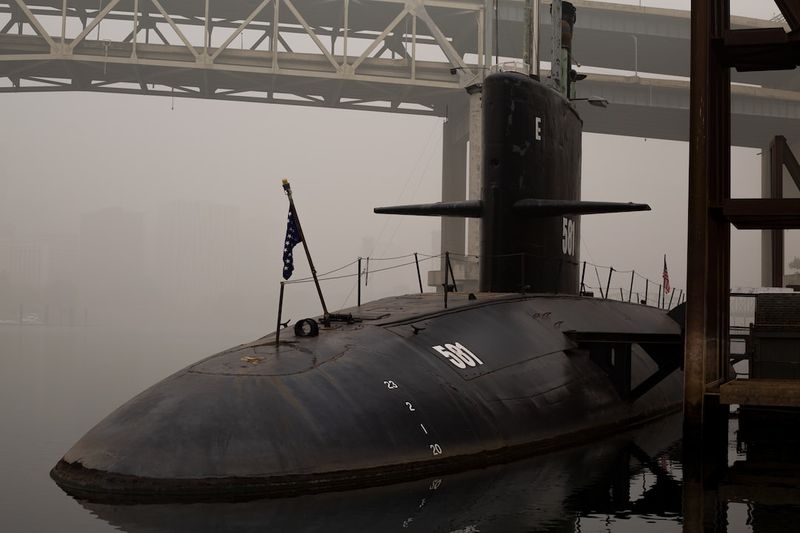Debris of Sub Found: Titan Crew Dead From ‘Catastrophic Implosion’
A Tragic Loss
In a devastating turn of events, the Titan submersible, carrying five individuals, has been confirmed to have suffered a “catastrophic implosion,” according to officials. The crew, consisting of one pilot and four passengers, tragically lost their lives. The submersible was on a mission to explore the wreckage of the Titanic when it disappeared, prompting a massive search and rescue operation.
An Acoustic Anomaly
The implosion of the Titan submersible was initially detected by a top-secret U.S. Navy acoustic detection system designed to identify enemy submarines. Hours after the sub began its journey, the system picked up an anomaly consistent with an implosion or explosion in the general vicinity of the sub’s operation. While not definitive, this information was immediately shared with the Incident Commander to aid in the ongoing search and rescue efforts.
Investigating the Implosion
Officials announced the confirmation of the sub’s implosion during a press conference. Debris found on the seafloor was consistent with a catastrophic implosion, which occurred just 200 meters away from the bow of the Titanic wreckage. The exact cause and timing of the implosion are still under investigation, with experts analyzing the debris to gain further insights.
The Search and Rescue Operation
Following the sub’s disappearance, a collaborative effort involving aircraft, ships, and underwater drones from the United States, United Kingdom, Canada, and France was mobilized in a race against time. The search teams faced the challenge of quickly obtaining equipment capable of reaching the depths of the ocean, as the sub had limited oxygen supply for only 96 hours. Despite their efforts, the tragic outcome of the implosion has been confirmed.
Distinct Noises
Officials have declined to speculate on the exact timing of the implosion. However, they stated that if it had occurred during the search, the significant noise generated would have been detected by their sonar. The noises picked up in the water during the search were deemed inconsistent with the location where the Titan submersible was eventually discovered.
Editorial: Tragedy and Reflection
This tragic incident serves as a stark reminder of the risks that come with deep-sea exploration and the inherent dangers faced by those who venture into the depths of the ocean. The loss of the crew aboard the Titan submersible highlights the need for enhanced safety measures and rigorous protocols in any high-risk endeavor.
Philosophical Reflection
This devastating event prompts us to reflect on the nature of exploration and the fleeting nature of human existence. Just as the Titanic met its tragic fate over a century ago, the crew of the Titan submersible encountered a similar end. It is a reminder that even with the most advanced technology and precautions, humans are still bound by the unpredictable forces of nature.
Importance of Exploration
Despite the risks, exploration and discovery remain important endeavors. The quest to uncover the mysteries of the deep sea has contributed immensely to our understanding of the world and has allowed us to witness the remnants of significant historical events such as the Titanic disaster. However, this tragedy should serve as a catalyst for a thorough review of safety procedures and risk management in such exploratory missions.
Advice for the Future
Enhancing Safety and Training
Moving forward, it is crucial that organizations involved in high-risk exploratory missions prioritize safety and implement stringent training programs for crew members. Precautionary measures, including regular safety drills and advanced communication systems, should be standard practice to mitigate potential risks.
Collaboration and Risk Assessment
International collaboration, as seen in the search and rescue operation for the Titan submersible, is vital in responding efficiently to emergencies and pooling resources for effective outcomes. Additionally, thorough risk assessments should be conducted before embarking on any deep-sea exploration, taking into account factors such as equipment reliability, emergency response plans, and the stability of the exploration site.
An Evolving Industry
The deep-sea exploration industry should constantly seek opportunities for innovation and improvement. Advancements in technology, such as remote-operated vehicles and enhanced communication systems, can help minimize risks and protect the lives of those involved in such endeavors.
Conclusion
The implosion of the Titan submersible and the tragic loss of its crew is a sobering reminder of the risks inherent in deep-sea exploration. This incident necessitates a thorough investigation into the cause and timing of the implosion, as well as a comprehensive review of safety protocols and risk management in high-risk expeditions. As we mourn the loss of those aboard the Titan submersible, let us also remember the importance of exploration and the ongoing pursuit of knowledge.

<< photo by Darren Halstead >>
The image is for illustrative purposes only and does not depict the actual situation.
You might want to read !
- “Raptors Secure Promising March Madness Star Markquis on Two-Way Deal”
- Stepson’s Reflection: Unveiling the Life of Paul-Henri Nargeolet, Trapped in the Depths of Titan
- Les Raptors de Toronto font une déclaration audacieuse en sélectionnant le prodige canadien au premier tour du repêchage de la NBA : Analyse et implications.
- Tragedy Strikes as Stockton Rush ’84 Goes Missing at Sea in the Titan Submersible
- Underwater Disaster: Unraveling the Cataclysmic Collapse of the Titan Submersible


![[HOMILY] Why the Nativity of Saint John the Baptist is the most important daysaintjohnthebaptist,nativity,homily,importance,feastday](https://ca.worldtrendnow.com/wp-content/uploads/2023/06/Gallery-Keyword-Nativity-VyJC8mHp8D8-77763.jpg)

